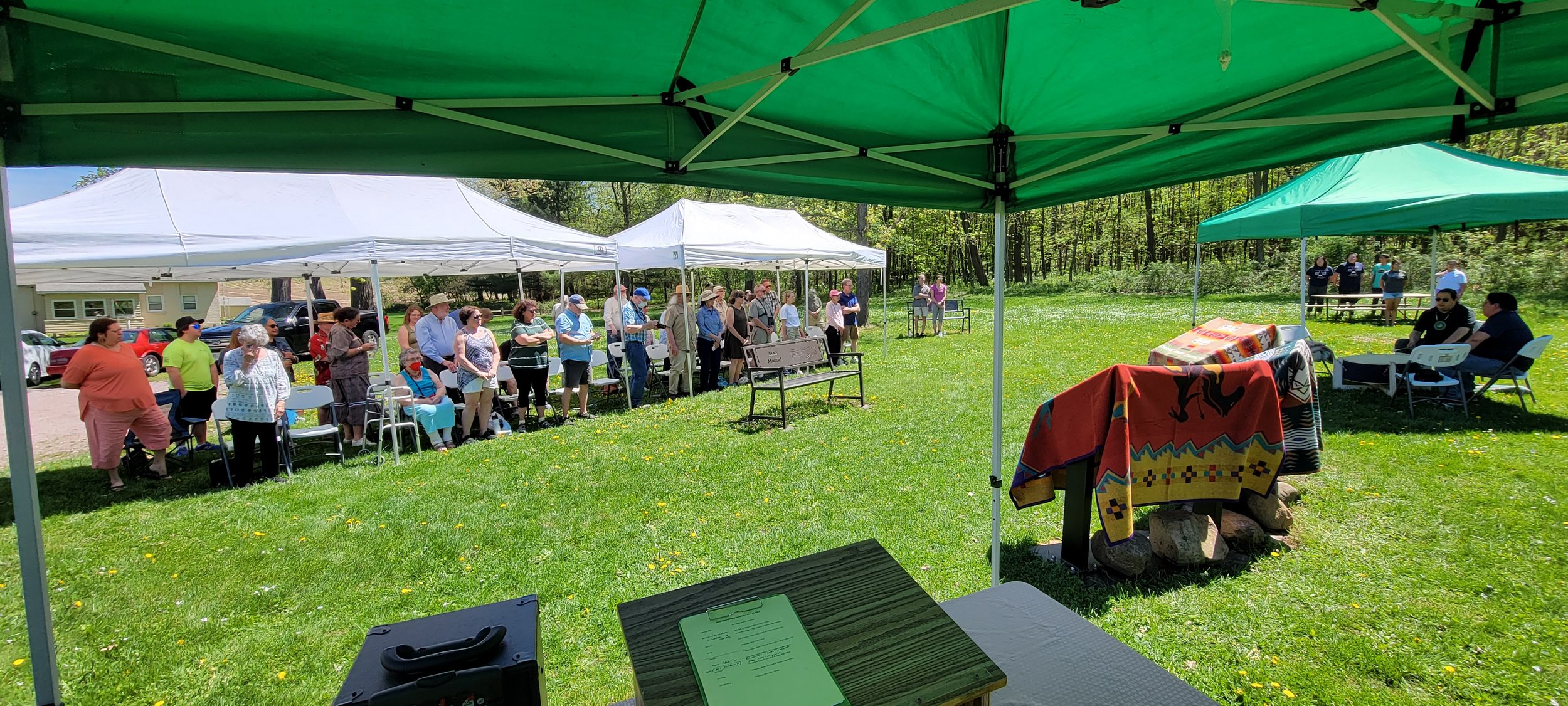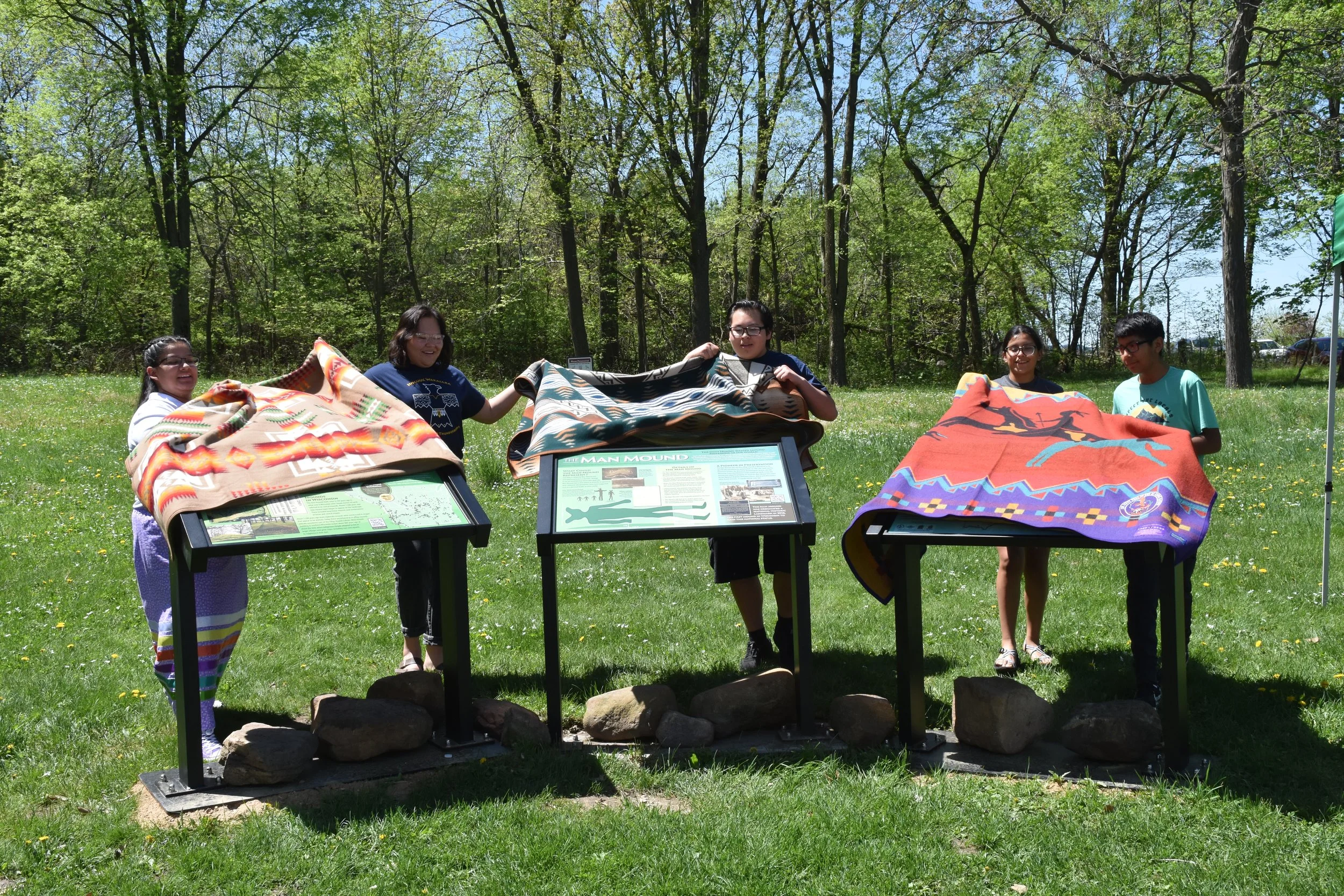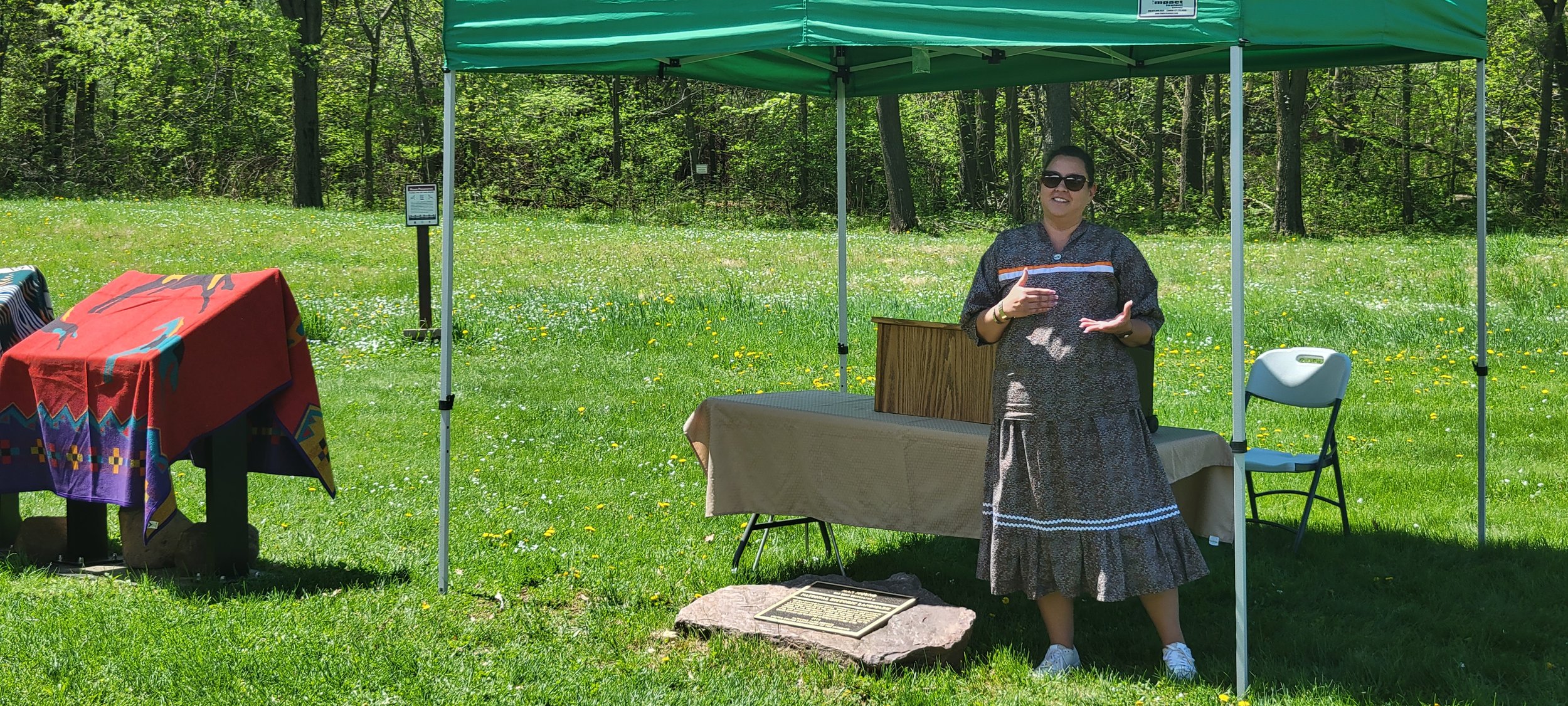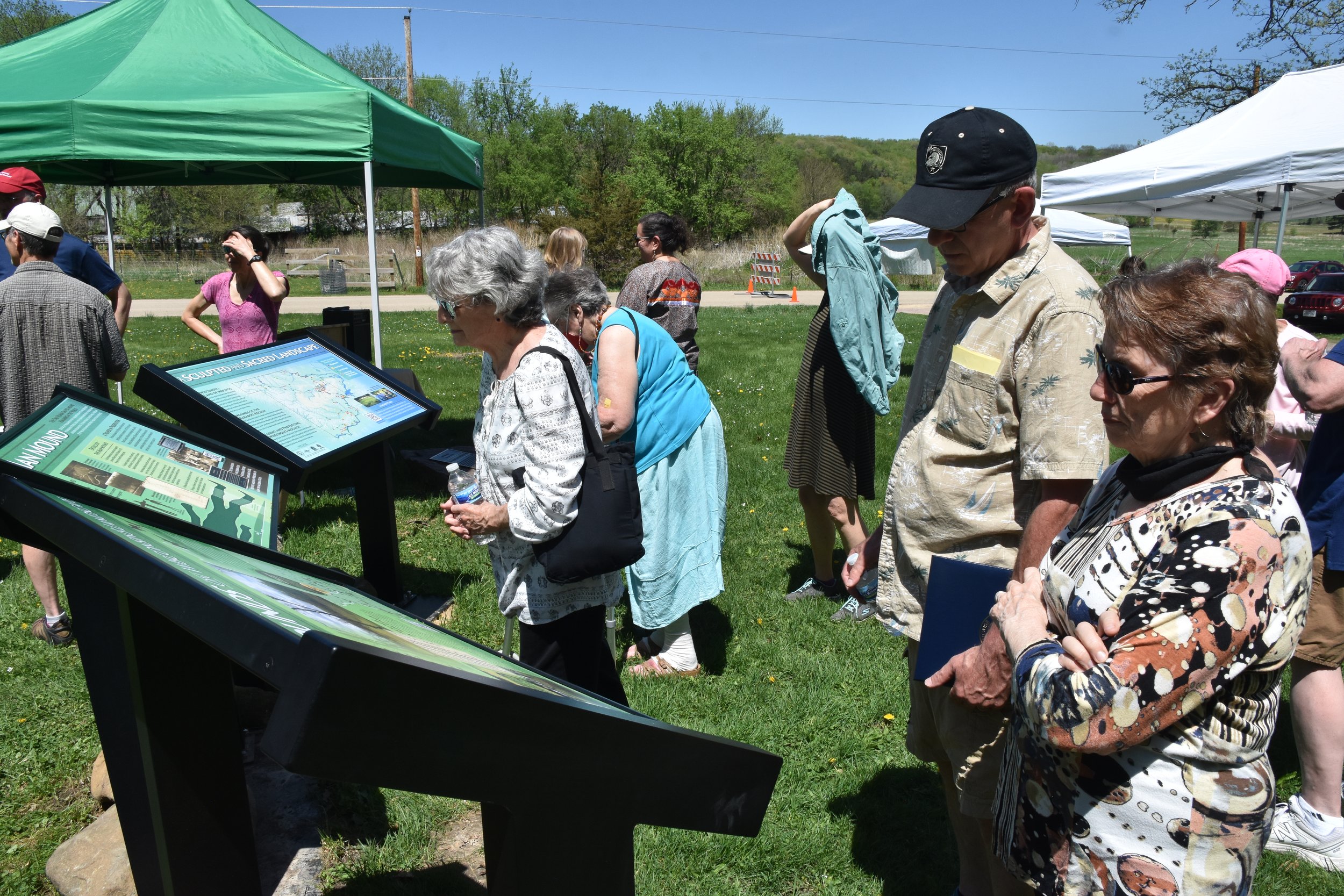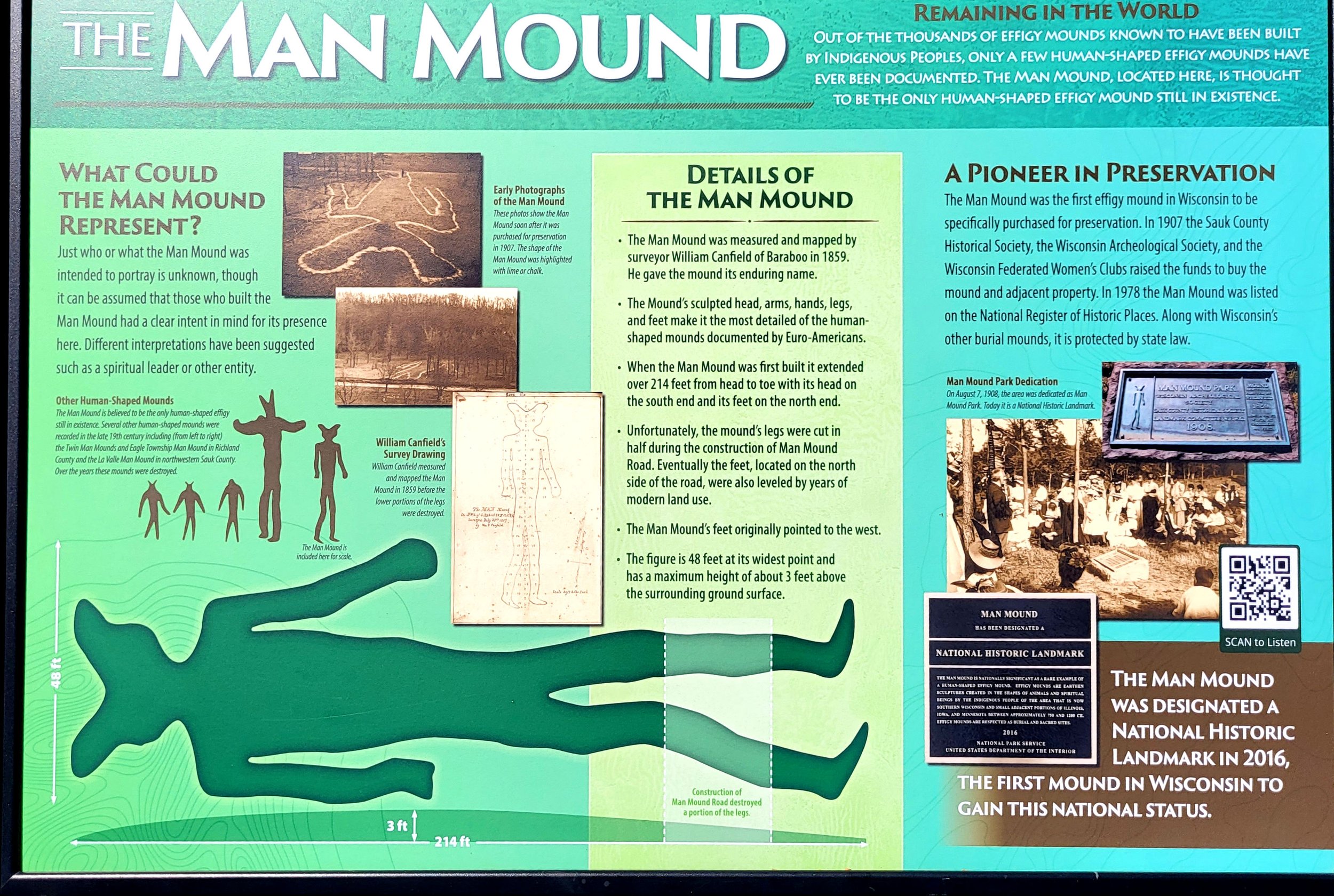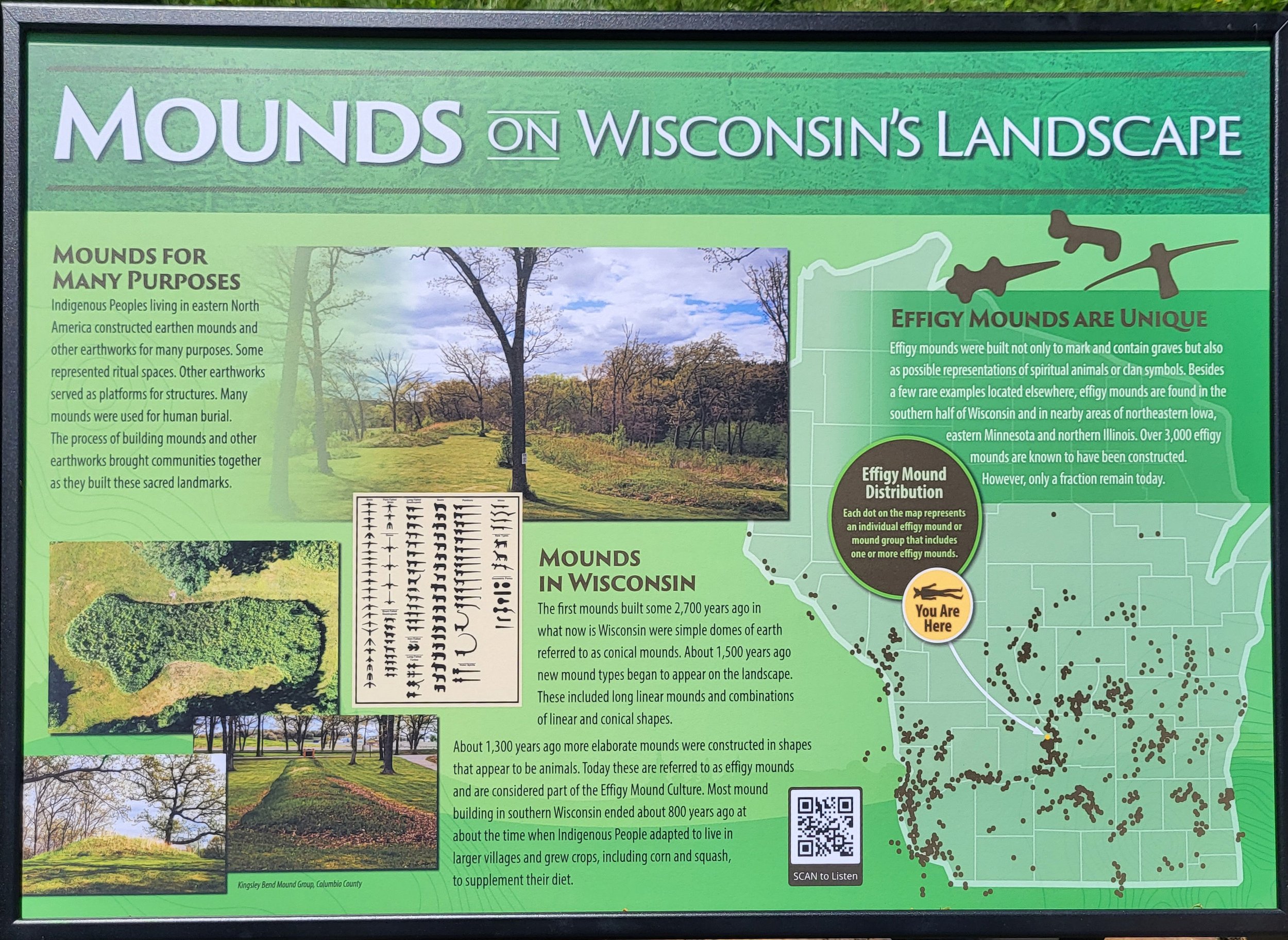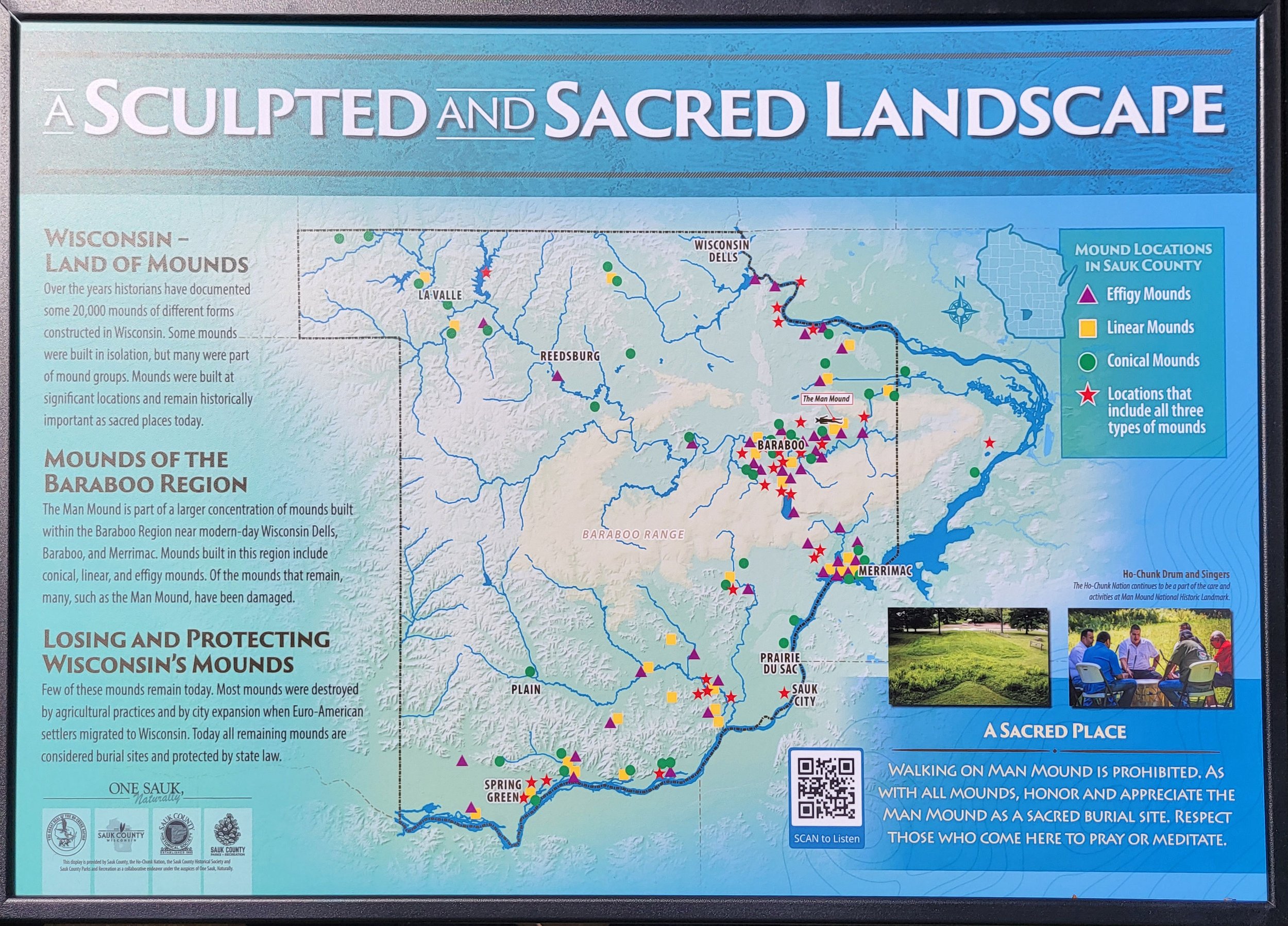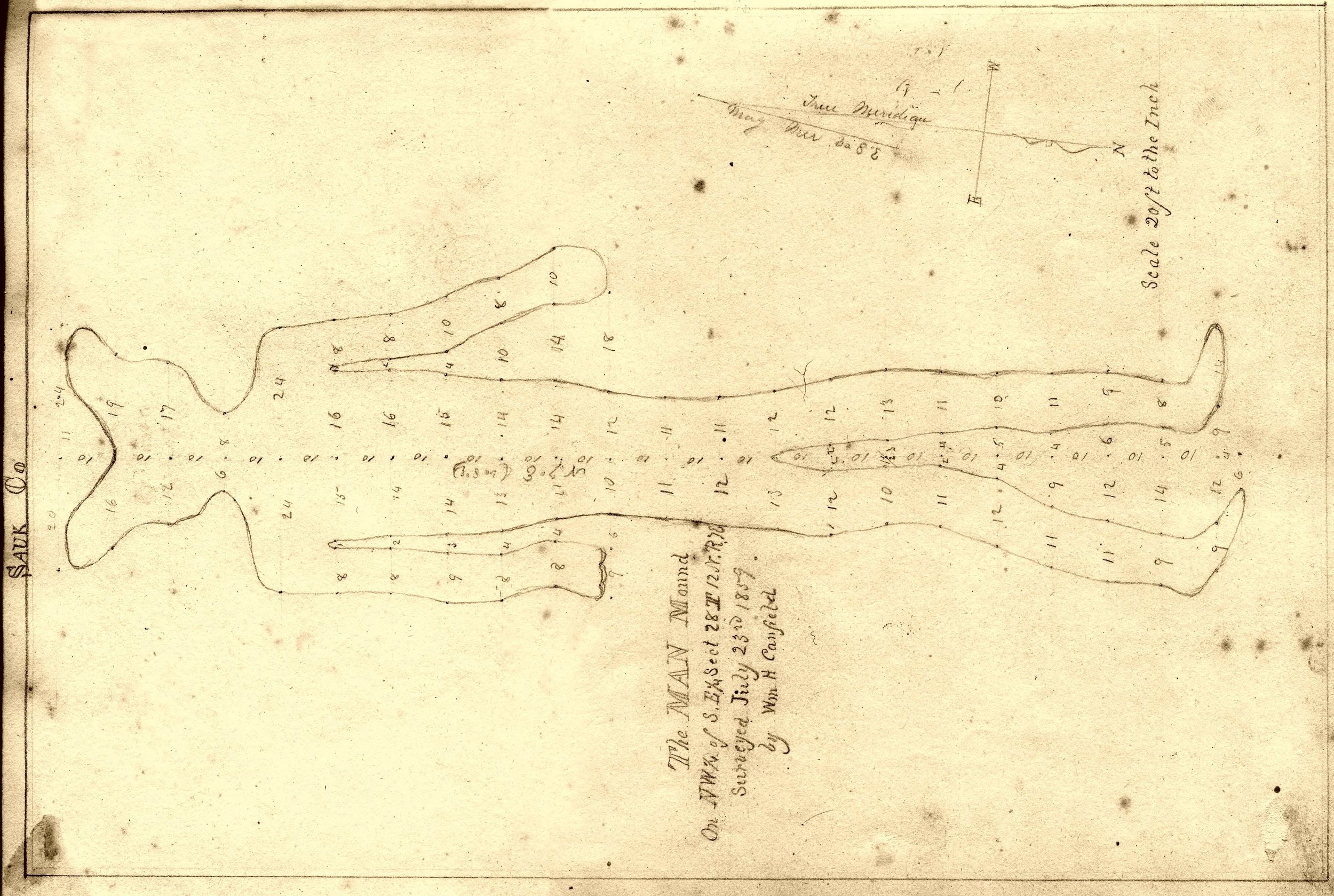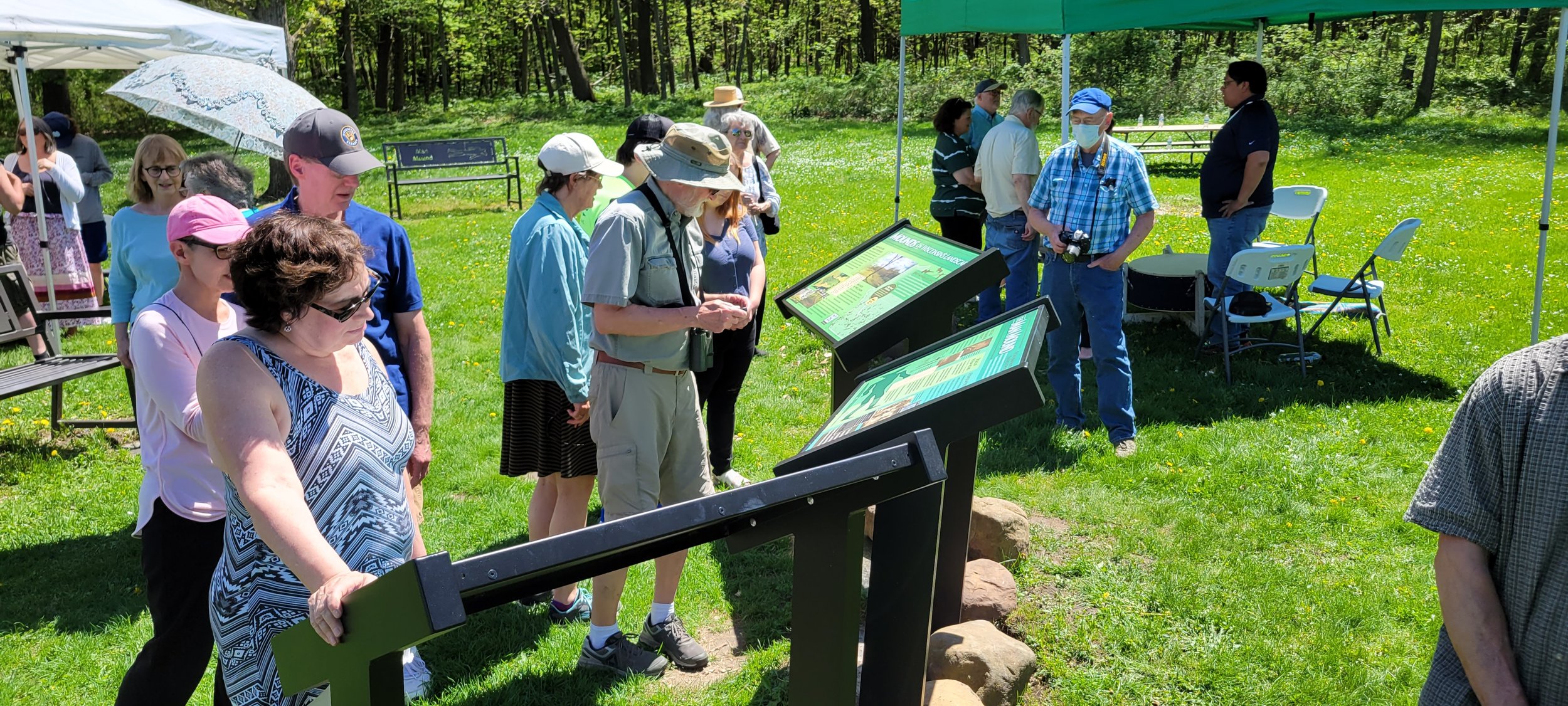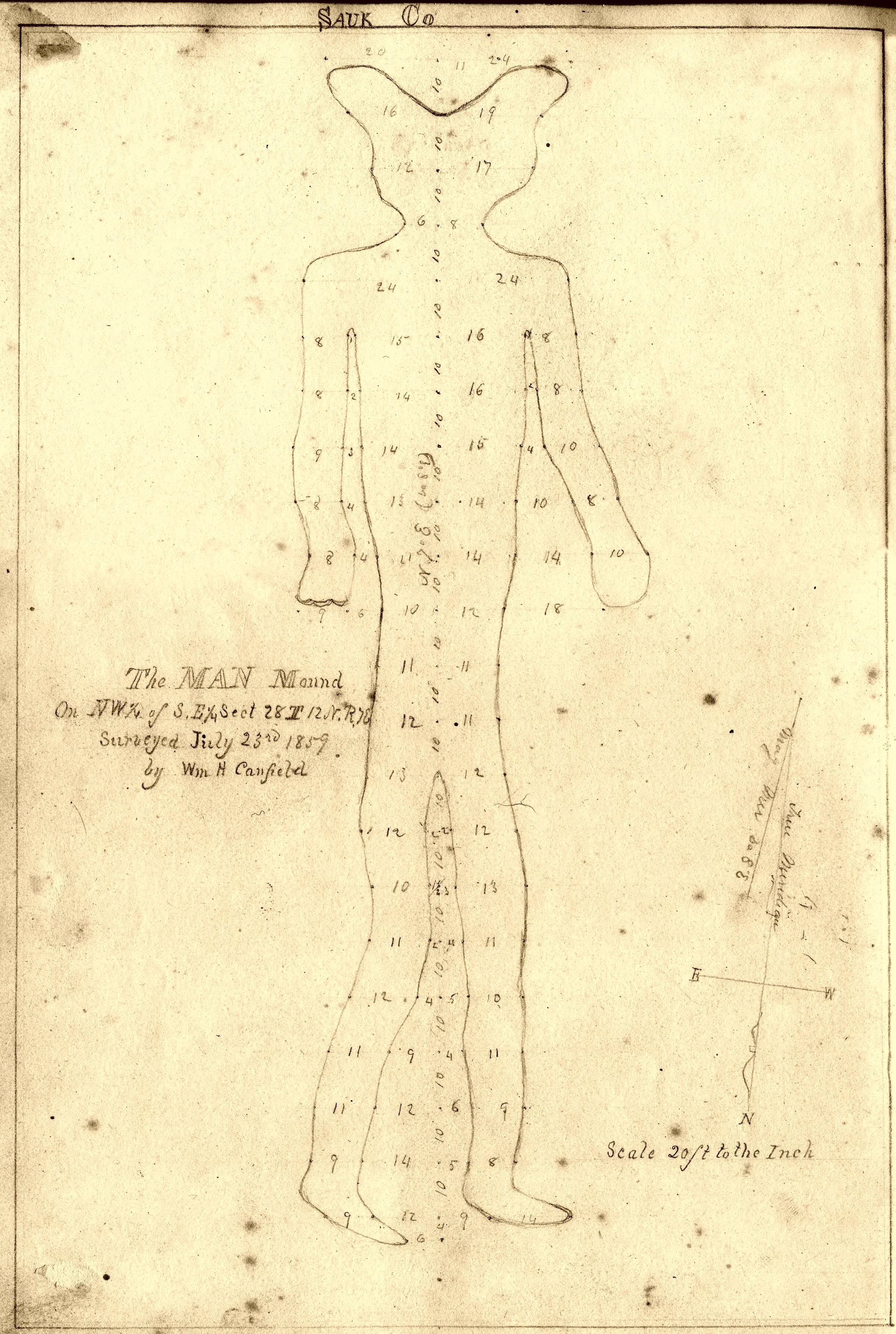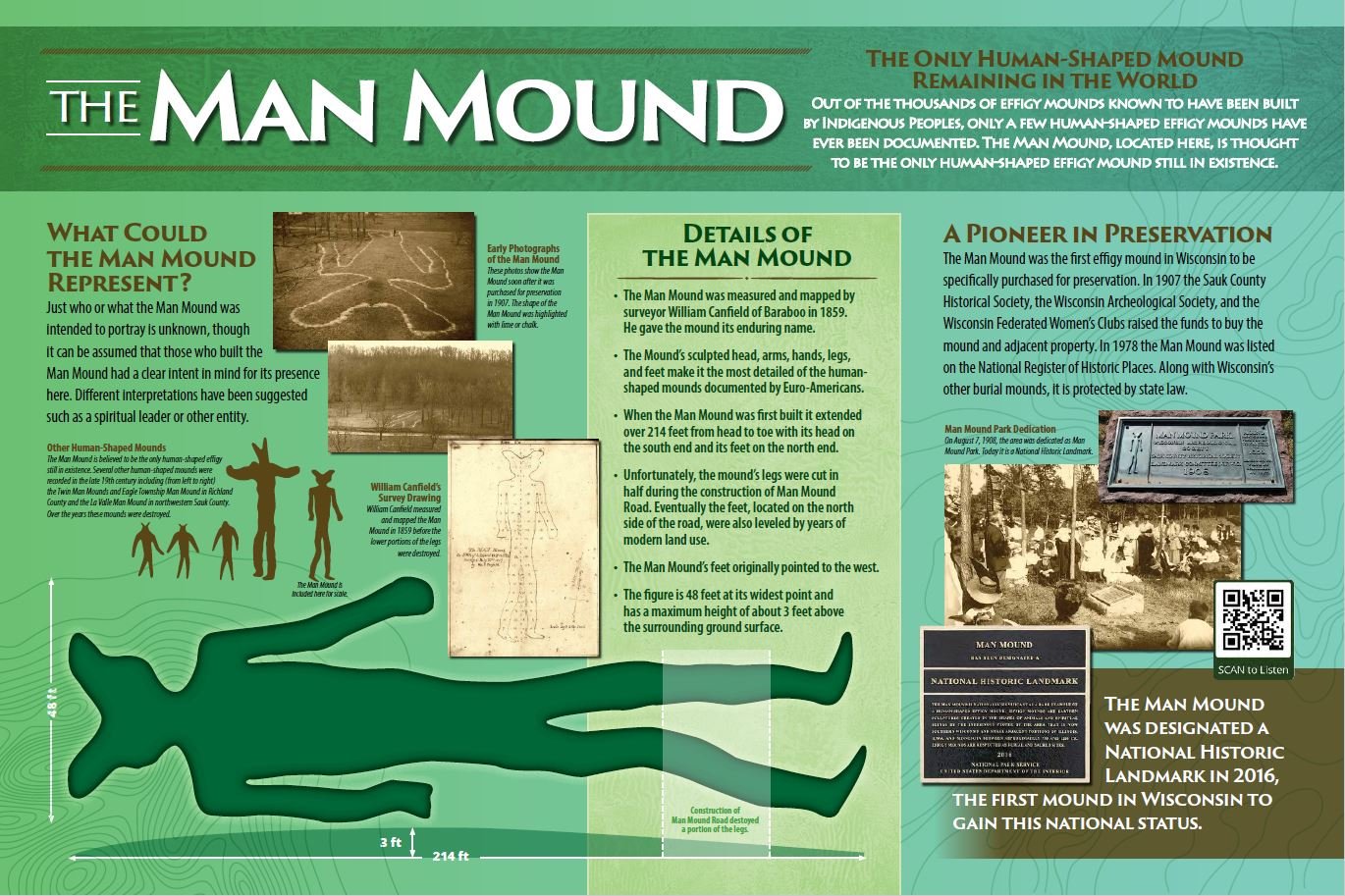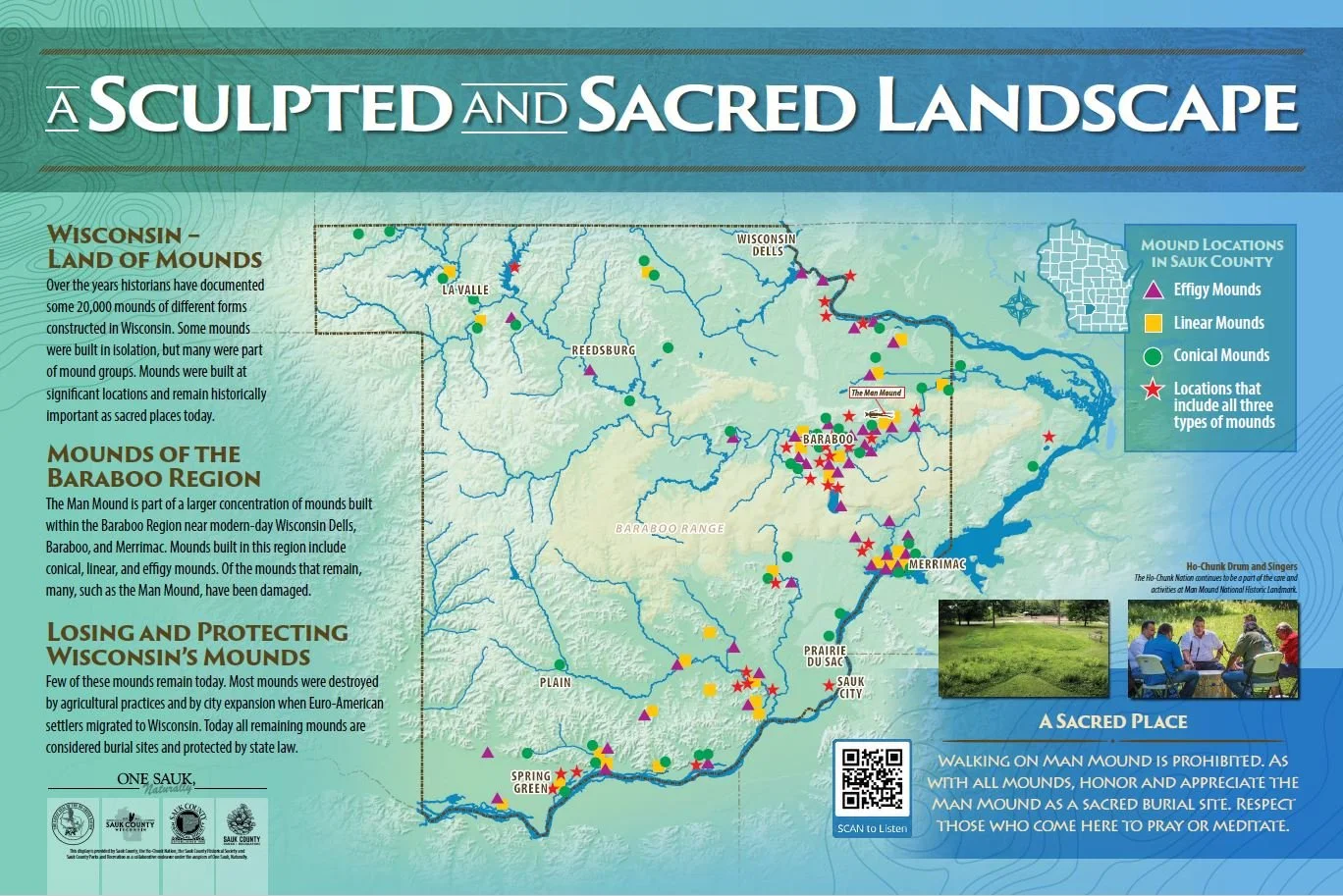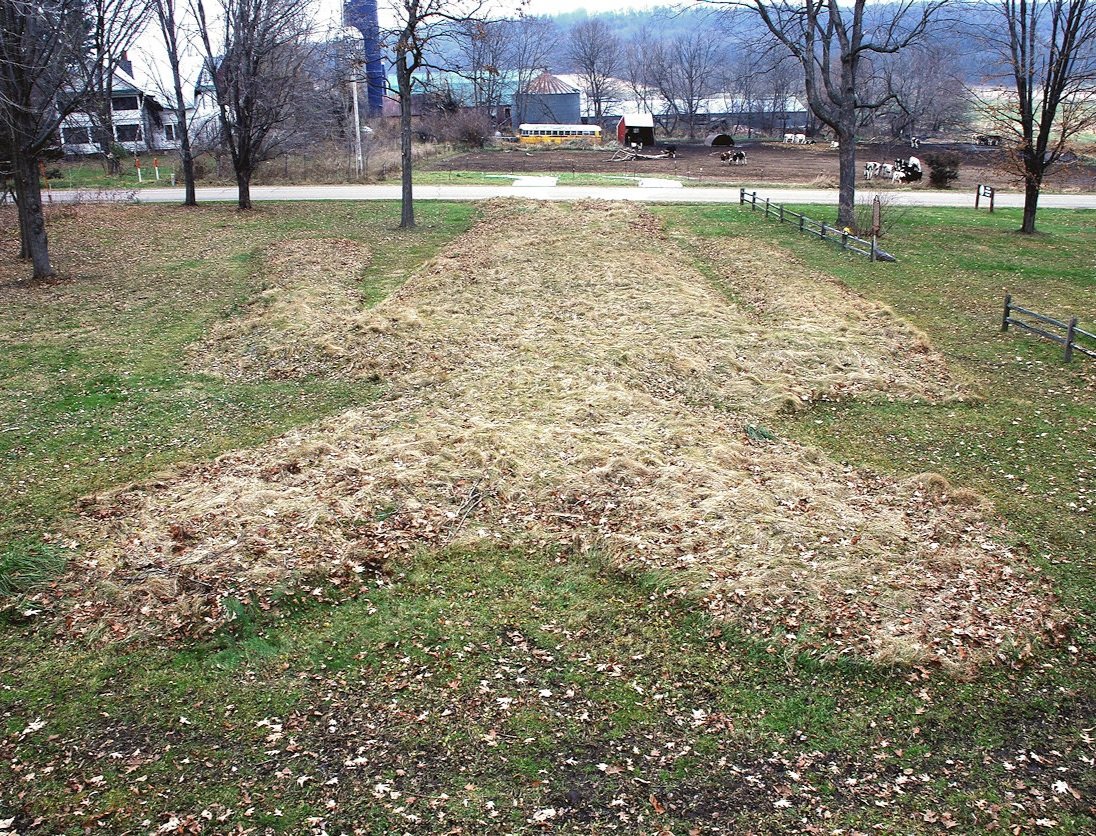Man Mound National Historic Landmark
The Sauk County Historical Society, in collaboration with the Ho-Chunk Nation and Sauk County, celebrated the unveiling of new interpretive panels at Man Mound National Historic Landmark on May 14, 2022. The panels tell the story of Man Mound, the Indigenous history of Wisconsin and the sacred mound culture that once dominated the Sauk County landscape.
Click a panel to expand it for full view. Scan each QR code with the camera of your mobile device to learn more.
The Story of Man Mound
On July 23, 1859, pioneer surveyor, William Canfield, created this drawing of the Man Mound.
Man Mound National Historic Landmark, located about four miles NE of Baraboo on Man Mound Road, was dedicated by the Sauk County Historical Society, the Wisconsin Archeological Society, and the Wis. Federation of Women's Clubs in 1908. The sacred site encompasses a mound of earth in the form of a man, measuring 214 feet by 48 feet.
Long before the Europeans came to the Midwest, indeed, long before Columbus landed in the West Indies, these Effigy Mound Builders were creating their ceremonial and burial mounds in southern Wisconsin and nearby states. At one time over 900 mounds existed in Sauk County alone. Most, over 75%, have subsequently been plowed under, erased by floods and destroyed by looters or construction. One early Honey Creek farmer noted that, "we were rather irked by the large number of Indian mounds we had to plow down. There must have been at least 25 on our land….Some were shaped like animals and some like birds, and all were from three to five feet high...I suppose we should not have destroyed them. But they were then regarded merely as obstacles to cultivation, and everybody plowed them down."
There are three basic forms of mounds: Conical, usually incorporating family burials; flat-topped or platform-shaped, constructed for chiefly homes or ceremonial purposes; and effigy mounds in the form of animals, which may represented various clans and lineages. Others have speculated that they may also have had religious significance or acted as guardians of the village.
Dedication of Man Mound Park in 1908
The Effigy Mound Builders began plying their skills as early as 300 AD, and continued the practice until around 1400 AD when they either abandoned the practice or were assimilated into other Native American cultures. They subsisted primarily by hunting, fishing, and gathering wild vegetables and berries. Few of these early cultures farmed.
William H. Canfield first surveyed the Man Mound in 1859. At the time, it was one of only two man-shaped mounds in the state.
In 1905, H.E. Cole, local historian and photographer, and A.B. Stout, science teacher at Baraboo High School, were conducting an archeological survey of area mounds, and the Man Mound in particular. They soon learned that the owner of the property was about to commit the property to the plow! The two men launched an immediate appeal to the Wisconsin Archaeological Society and the Sauk County Historical Society in an effort to obtain the grounds upon which the mound was situated.
A committee was formed and a movement organized to raise $225 to purchase the property. Among those on the committee, were H.E. Cole and Jacob Van Orden (banker and owner of the home where the SCHS museum is now located).
Donations of small amounts between $1 and $15 were suggested so that many more people could participate in the acquisition. The Wis. Federation of Women's Clubs and the Wis. Archeological Society also helped procure funds. By the end of 1907, the money had been raised and the property purchased.
Cole immediately began clearing the land of vines and brush, seeding grass, setting boundaries and installing hitching posts. Jacob Van Orden donated a plaque (designed by Ferry & Clas of Milwaukee) commemorating the mound's discovery and preservation.
Man Mound November 2010
On Aug. 8, 1908, a group of 200 assembled at the Warren Hotel, and proceeded to the site of Man Mound National Historic Landmark to dedicate the land and the marker. "...Vehicles of every description being in waiting and the trip through the picturesque county began", noted a reporter. "A cloud of choking dust enveloped the queue of travelers as they traveled to the site over the dirt roads in their open-air autos and horse-drawn carriages."
John M. True, of Baraboo, spoke to those assembled. "We are pleased to note the increasing interest that is being manifested in the discovery and preservation of this class of relics of a people long since forgotten, of which the Man Mound is considered of the greatest interest and importance of all of Wisconsin's celebrated emblematic earthworks."
Man Mound was partially destroyed in the early part of the last century when the lower parts of its legs were excised during road construction.
The Sauk County Historical Society is the owner of Man Mound National Historic Landmark.


